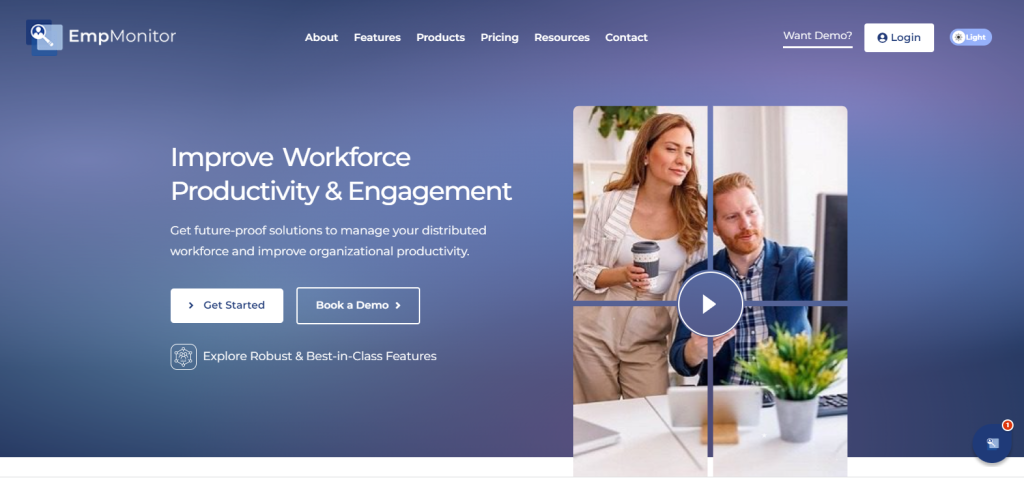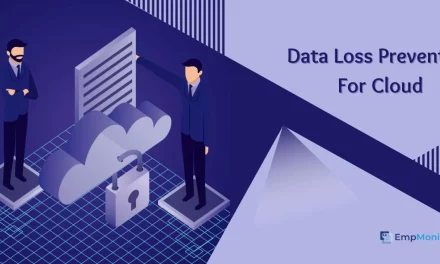According to a report by Gartner, by 2024, remote work will be the primary work arrangement for 30% of the workforce. With its increasing popularity and potential benefits, remote work continues in all types of jobs, including those that commonly require on-site work. Especially after the pandemic outburst, remote work culture has a change in work style where employees are offered work even from a distance.
However, remote work comes with a lot of challenges. And one of the issues is maintaining productivity. Companies are implementing various workforce rules and policies with advanced training to navigate communication and keep track of remote employees. Fortunately, these policies are made based on appropriate research to maintain the engagement and productivity of the employees.
We understand the shift to the remote work culture was challenging initially. But with the help of remote workforce management software, you can set clear expectations around tasks and deadlines for your employees to establish good remote employee management software and make sure your team feels supported and appreciated.
However, managing it well can be a game changer for your business.
What is a remote team, and what are its challenges?
A remote team is a group of professionals from various time zones with diverse skills and different cultures working together on a unified project. Each teammate works from a separate location, living in cities, and works across opposed times and spaces.
But remote work is one thing, and managing a remote team is another challenge. There is a lot of difference if the team members sitting right in front of the office and when they work outside the office. While remote work offers many benefits, such as increased flexibility, reduced overhead costs, and access to a broad talent pool, it also presents several challenges. Here are some of the top challenges faced by businesses in remote work:
Challenges
Communication:
Transmission can be more challenging in a remote work environment, especially if teams are spread out across different time zones. It can be difficult to collaborate, especially to share information and maintain a sense of connection among team members.
Technology:
Remote work relies heavily on technology, and businesses demand to ensure that their employees have access to the right tools and systems to work efficiently. This technology includes hardware such as laptops, reliable internet connections, and software such as communication platforms, project management tool features, and cybersecurity measures.
Management:
Remote employee monitoring software workers can be more challenging than managing on-site employees. Managers want to establish remote workforce management software with clear expectations, provide regular feedback, and monitor progress effectively while ensuring remote workers feel supported and connected to the team.
Productivity:
It can be challenging for remote workers to maintain their productivity levels without the structure and routine of an office environment. Distractions at home, a lack of social interaction, and difficulties in maintaining work-life balance can all impact productivity levels.
Training and Development:
Training and development can be more difficult in a remote work environment, especially for new employees who may not have the same level of support and guidance as they would in an office environment. Companies must find new and creative ways to onboard, train and develop their employees remotely.
When you are managing remote employees, you would know the challenges that come along with managing teams and keeping projects on time. But with the right remote workforce management software, even if there are challenges, they can be resolved smartly.
Remote work management: How to manage a remote team
Managers can improve their leadership of remote teams by taking quick and cost-effective measures. It is essential to schedule daily check-ins and utilize video conferencing to compensate for the lack of face-to-face interaction.
Over-communicating is critical in ensuring everyone understands their responsibilities, tasks, and expected outcomes. With the help of technology, many companies, and Microsoft Teams, managers can implement these strategies and support team engagement while increasing productivity.
Managing remote teams can be a daunting task for many companies, while some like, Aha, NationBuilder, Automatic Buffer, and others have successfully transitioned to being 100% remote working companies.
You’re struggling with managing remote teams and want to seek ideas on how successful remote workforce management software operates and search for tools to manage remote employees.
In this article, we are shedding you the best remote workforce management software that can make your work easier and faster.
Introducing Empmonitor:
One of the leading remote workforce management software that provides you with the best time tracking and management features. This worker management software also allows you to monitor work standards and productivity in your organization.
EmpMonitor allows you to remote employee monitoring your company devices from a centralized platform. EmpMonitor can be accessed from any internet-connected device, allowing you to monitor your business from anywhere. You can manage activities in real using its real-time remote workforce monitoring software. EmpMonitor helps your team work more productively while putting in less effort.
Let us have a look at its features.
TRACKING TIME
This remote workforce management software monitors daily attendance and activity, including idle or unproductive time of your employees. EmpMonitor fits the best as an employee time tracker.
SCREENSHOT AT REGULAR INTERVALS
EmpMonitor can generate automated screenshots at regular intervals so that you can watch the real-time activities of your remote employees.
CHAT MONITORING
EmpMonitor lets you track how much time employees spend on chat and social apps during working hours.
DETAILED INSIGHTS AND REPORT
EmpMonitor is a remote workforce management software that analyzes the performance of your employees and provides in-depth reports through easy-to-understand graphs.
ATTENDANCE LOGS
EmpMonitor records accurate login and logout times of your employees, which helps you automate attendance records.
MONITOR BREAKS
EmpMonitor allows you to monitor how much time employees spend away from their devices,
BROWSER HISTORY
With EmpMonitor, you can keep track of browsing history even if they delete it from the assigned devices.
07 Tips to lead distributed workforce 
1 – Make sure to have daily check-ins on your schedule
For managers and teams who are new to remote work, it is essential to have regular check-ins. While emails, phone calls, and text messages were once sufficient, successful remote leaders use remote workforce management software more frequently to ensure productivity, which is lacking in remote work environments.
2 – Communicate Enough
In addition to daily check-ins, it is crucial to over-communicate regarding team tasks, duties, responsibilities, and desired outcomes. In a traditional workplace setting, communication can already be a challenge. However, remote team management software becomes even more critical when employees work remotely and focus on new or different tasks and goals. This is especially true in a flexible work environment where team members may be scattered across different time zones or working non-traditional hours.
3 – Utilize technology to your advantage.
Most of us have already undergone digital transformation, which typically takes organizations months, if not years, to implement. Platforms like Zoom, Google Hangouts, and Microsoft Teams provide straightforward tools to address tips 1 and 2. Although it is initially uncomfortable, these tools can significantly enhance engagement strategies and productivity.
4 – Implement rules of engagement
In the military, we refer to them as ROEs, but in remote work, managers must establish guidelines on communication frequency, means, and timing. It includes using video conferencing for daily check-ins and instant messaging for urgent matters, setting expectations for when team members can reach their manager, and vice versa. It is also vital for peers to share necessary information.
5 – Expectations had to be managed
Managing expectations is always vital, but especially crucial in the current environment. Due to organizational pivots, employees may have shifted focus and are working on new tasks that affect their ability and motivation, leading to changes in performance and outcomes. Therefore, make clear expectations and feedback requested to ensure alignment and focus.
6 – Monitor outcomes, not activities
Empowering employees and increasing engagement involves focusing on outcomes, not just activity. By defining goals and desired results and allowing trained employees to develop a plan of execution, creativity, and ownership are enhanced. It is not easy to micromanage remote workforce management software is beneficial in a remote environment.
7 – Define the purpose of these guidelines
Tying the first six tips together is critical to define the purpose of outcomes. While the emotional connection to the mission is always essential, it becomes even more critical in a new battlefield with new initiatives, enemies, and uncertainty. Ensuring everyone understands the overall purpose and their role in achieving success is crucial for high performance in remote teams.
Read more:
5 EASY BENEFITS OF REMOTE EMPLOYEE MONITORING SOFTWARE
PROS AND CONS OF REMOTE WORKFORCE MONITORING
HOW TO GET AHEAD IN BUSINESS WITH REMOTE WORK MONITORING SOFTWARE
A Complete Guide To Distributed Workforce For Businesses
Conclusion
When you spend the whole day sitting next to a person, it becomes much easier to get to know them. You work together and spend hours nearby, allowing you to understand their strengths, weaknesses, and personality. However, remote work monitoring software takes a little more effort to get to know your team. To make a point to have discussions that help you learn about their personalities without prying into their personal space. This technique can foster a positive culture within your remote team and distributed workforce.
As the market becomes more global, so should your team. When managing remote workforces, it is necessary to understand the needs and preferences of your employees. With the right tips and tricks, you can effectively manage your remote workforce management software and create a dynamic business with your remote workers. If your remote team is already working at its peak, you can go with our amazing tricks and tips for managing them.
We hope we can help you resolve the issue of managing your remote team.
Best of luck in creating a lucky remote working culture!













